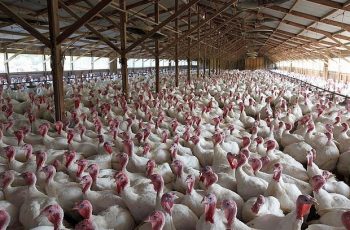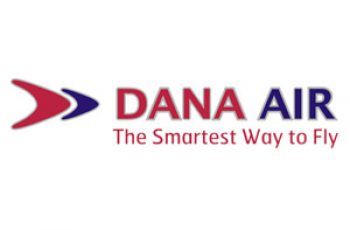Mass Transportation by Tricycles popularly known as “Keke NAPEP” was introduced on November 6, 2002, by the former president of Nigeria, Olusegun Obasanjo, as part of the government’s poverty alleviation programme called, “National Poverty Eradication Programme (NAPEP)” in a 2001. Also, the introduction of “Keke NAPEP” was a strategy by the Government to meet the ever-increasing demands for public transportation in Nigeria.
Since its introduction, the Keke NAPEP has come become a source of income for many Nigerians. It also became a safer alternative to commercial motorbikes (Okada), which were banned in many places, and is used to convey people over short distances all over the country.
Most people in Nigeria prefer the commercial tricycles to Buses and Mini-buses because the commercial tricycles have the capacity to move into the nooks and crannies of a town faster and easier compared to Buses and Mini-buses. For example, in 2008, the Lagos State government kicked off the Lagos Bus Rapid Transit System (BRT), thinking that the transport needs of Lagosians will finally be met. The reality on ground is that that is far from it. The BRTs only reduced the problem of poor transportation by a small amount. This is so because the BRT only catered for major parts Lagos State, especially Mainland and Island routes.
If the BRTs only served those parts of Lagos, we might then ask, how will people living outside these areas fair? Knowing that low income and horrible traffic will prevent many people from getting their own vehicles, many are left with no choice but to use privately-owned commercial vehicles for movements within the city? Yes. Here is where Keke NAPEP comes to the rescue.
Some Nigerian graduates without jobs have wholeheartedly accepted riding Keke as a business. They use it to raise money for self and family and see riding keke as a better alternative to staying at home doing nothing. Also, Keke NAPEP business creates opportunities for lucrative investments and helps to lessen the burden of the poor transport network in the country presently. So, would you like to start Keke NAPEP business and make money like others? Below is a breakdown of the how-to of Keke NAPEP business.
Now, there are two parts to the Keke NAPEP riding business: either you ride it yourself or you lease it to a rider.

Tricycle (keke NAPEP) conveying passengers to their destinations
Option 1: Leasing Your Tricycle to a Rider (Hire Purchase)
First, you have to get the Keke, register it and lease it out to a rider. See the breakdown of how this is done below.
Price of a new tricycle: ₦400,000
Registration with the Keke riders’ union: ₦5,000
The tricycle is leased at ₦720,000
Here, you will receive a weekly payment of ₦15,000 from the rider (or hire purchaser) for a period of 12 months, that is 48 weeks making it ₦15,000 x 48 = ₦720,000
Note that this is not a hard and fast rule: some terms and conditions may be applied in your situation and things may look a bit different with the hire purchaser you’re working with.
Registration with the NAPEP riders’ union allows you to enjoy some form of freedom, support and security.
Make sure that your hire purchaser is trustworthy, has a good track record and preferably has some referees under his belt.
Doubts have held some people back and stopped them from trying out this venture. If you want to test the waters, start with one tricycle. This will help you to know whether this business is something you can comfortably go into or not. However, the most lucrative thing to do is to buy as many as you can afford at the time because that will increase your remuneration in the long run. For example, if you lease five tricycles, you can expect up to ₦1,600,000 as returns in a year.
This price analysis and breakdown is based on the realities of Lagos State at this time.
Doing it Yourself
If you choose to ride the tricycle yourself, you will be very much impressed at the outcome. In a day, you can be making anything from ₦4,000-₦7,000, depending on the number of passengers you commute.
Apart from the ₦5,000 union registration fee, you’re also expected to pay between ₦500-₦1,000 daily (known as owo itaa). Part of this daily fee goes to the government’s coffers.
Tricycle maintenance is cheap, spare parts are readily available and fuel consumption is low. One thousand naira worth of fuel can take you a whole day if you have a good carburetor.
Always remember that maintenance is the key to a long-standing tricycle. So, maintain the vehicle regularly to lengthen is lifespan.
With ₦5,000 daily earnings while operating it yourself, you can easily earn ₦1.5 in a year (grossly calculated at ₦150,000 monthly) after expenses have been made.
After a year or more of doing this business, you can decide to continue, expand, or change your line of business.
Things to Note When Putting Your Tricycle for Hire Purchase
How soon you will receive your complete returns on the tricycle depends on the following factors:
- The status of the tricycle when you bought it. Was it new or second hand?
- Does your tricycle operate during the weekends? What is the money earned during those days for (maintenance money, etc.)?
How payments are made
- Hire purchase. In this method, the driver takes care of routine service, minor repairs, maintenance and fueling.
- Daily balance.
I will not advise you to lease your Keke NAPEP on daily balance.
There is no brother in business. Be wise and open your eyes.
Hire purchase is the preferred method of payment in the North and in most parts of the country. It is the best method of receiving returns for your tricycle(s).
In Niger and Katsina states for example, daily returns are between ₦2,000 and ₦3,000 for a new tricycle. For second hand tricycles, daily returns are negotiated, but in Niger State, ₦1,500-₦1,700/1,800 is the amount paid.
Note that these are just estimates based on the present realities.
In Lagos, riders pay between ₦2,000-₦3,500.
- Negotiated.
- Standard: paying double the price. This is most popular in the North for second hand tricycles.
That is all on Keke NAPEP and how to start and operate it successfully in Nigeria. I hope you learned from this? Leave a comment below and let me know what you think about this.

